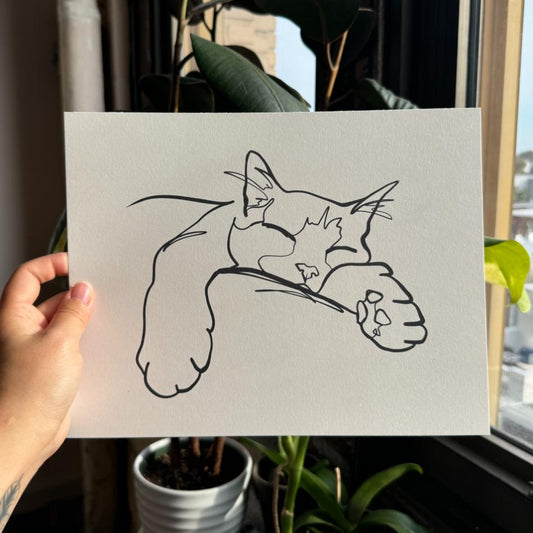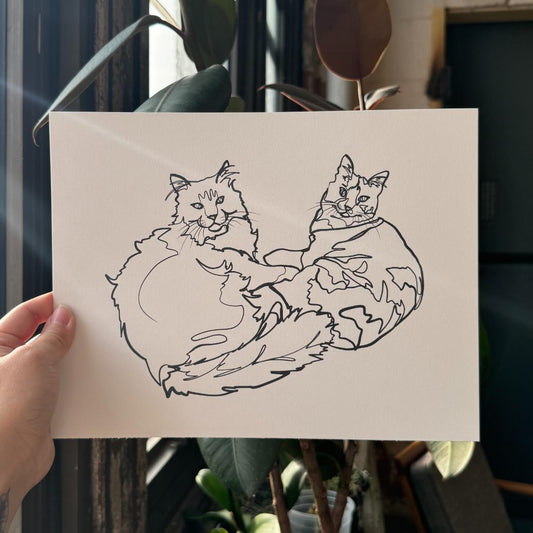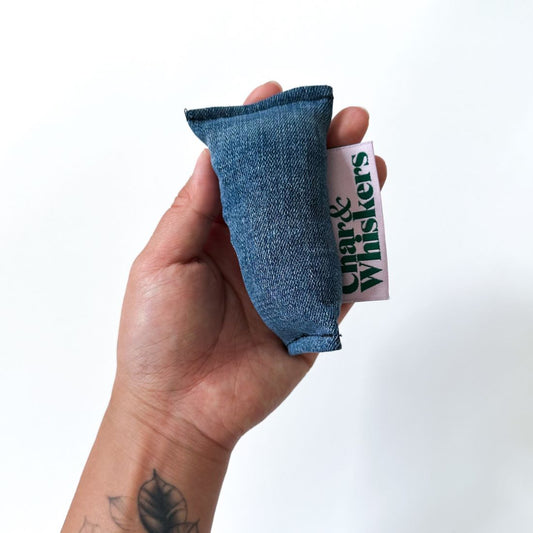
Your Dog Has Separation Anxiety. Now What?
Chris BlondellYour Dog Has Separation Anxiety. Now What?
Does your buddy whimper or whine whenever you leave? When you grab your keys to head out, does your dog have an accident? Do you return home to destroyed furniture? Is your pup resembling the trademark jumpiness of Scooby Doo only not at all funny? If any of these things are true, it’s likely that your dog has separation anxiety.
To give more informed context to these concerns, we reached out to our friendly neighborhood veterinarian, Dr. Corinne Majeska of Companion Pet Hospital in South Philadelphia.

Why Does Separation Anxiety Occur?
Separation anxiety, or separation-related behavior (SRB), occurs in about eight in ten dogs. Exactly why SRB occurs varies from dog to dog. It can occur if they’re a foster dog moving from home to home, abrupt changes in routine or residence, sudden change in family, or something traumatic that occurred during puppyhood. Until there are great advancements in dog psychiatry, we can only constructively focus on recognizing symptoms.
The most common symptoms you’ll notice are:
- Destructive behavior (ripped furniture, chewed or scratched doors or walls, general mayhem)
- Howling, barking, or whining while you’re away
- Indoor defecation
- Excessive excitement or attachment upon your return
- Escaping or running away while you’re out
- Signs of anxiety before you leave (whining, barking, panting)
Less common you may not notice are:
- Trembling, mild panting, or excessive salivation prior to departure
- Self-injury (patches in fur due to excessive licking, tail biting, paw chewing)
- Repetitive, self-soothing behavior (circling, pacing, barking)
- Regular vomiting
- Not eating when out (not eating from bowl, not engaging with food-related toys)
If your fluffy buddy is experiencing any or all of these symptoms, they may be suffering from separation anxiety. Reach out to your veterinarian to begin productive treatments.
First, Rule Out Other Medical or Behavioral Issues
Before you decide that your dog has separation anxiety, make certain that it’s not something else. Indoor urination could be due to submission, excitement, incomplete house training, or marking. Furniture destruction could be due to their immature age, overexcited play, or simple boredom.
Those issues are much, much easier to address and train than separation anxiety. Rule them out before you start on a much more specific and specialized treatment plan.
Establish a Predictable Routine
If you can train your pup to expect departures at certain times, it can make addressing their anxiety issues far simpler. Dogs, like us, require routines in order to maintain general health. Healthy routines are needed in order to function properly and keep up emotional stability.
You may not know it, but dogs have a remarkable perception of time. They take mental notes, or “time cells,” of what comes next. Dogs remember specific activities and connect them with the time of day. They learn to anticipate our movements based on the time of day and what we’re doing or what space we’re in.
The more regular your routine and how thoughtfully your consider your pup as a part of it, the more confident and comfortable they ultimately will feel. They’ll be able to identify your departure and arrival times based on cues such as grabbing your coat and keys without having a total freakout.
Create a Safe Space
Some pet parents are apprehensive about crate training. Maybe it reminds them of a pound or a cage. However, it doesn’t have to be. Many dog owners swear by crate training as it teaches dogs a lot with a little.
“When done correctly, a crate is the way to give your pup a safe and comforting space to retreat within. It should not be used as a punishment, but allows for them to feel comfortable and safe while also keeping your home safe as they learn to navigate alone time.
Some dogs are able to mature out of having a crate, while others continue to use it as a home base throughout their lives.”
Set it up like it’s your pup’s bedroom. Add blankets, pillows, their favorite toy, and set it up in a quiet or comfortable area in your home. They will quickly learn to know the crate as their space. Having their own space allows dogs to create a stronger bond with the household and family.
You’ll have a greater peace of mind and they’ll learn to settle while you’re away. They will control their bowels/bladders, avoid destroying any furniture or getting into place they shouldn’t be, and will usually take the opportunity to nap.
Put some of their favorite puzzle toys or a rawhide in with them and they will adjust to appropriate and healthy behaviors while you’re out. Simple crate training can really go a long way if done right.
Maybe Consider Medication
Will medication change their personality? Will it “zombify” them? What kind of side effects are there and how severe? Are these medications a forever thing? There are a lot of questions that will cycle through a pet parent’s head about whether or not to use anti-anxiety medication as treatment.
One thing you should know is that these anti-anxiety medications, just like in humans, are not a “magic pill.” These meds are simply a tool in your anti-anxiety arsenal. They should be used alongside behavior modification and training. Anti-anxiety medications affect brain chemistry in a way that productively supports overall treatment. Talk to your veterinarian about these medications to learn more about their effect.
“Medication should be used as a way to reduce the high level of anxiety that the dog is feeling in order to allow them to be receptive to behavior modification. If they are able to respond to behavior modification without medication, it's not needed.
If they are so stressed out that they can't focus on learning how to cope with the stress, then medication is indicated. While this is not always the case, the *goal* is to wean our patients off medication once the behavior modification has been accepted. If your dog's trigger is loud noises and you live next to a fire station, there is only so much we can do without help!”
As your pup improves, learns new coping skills, and grows to become generally less anxious, they will likely become less dependent on medication. Some dogs, however, may struggle with severe, chronic anxiety for the rest of their lives. If that’s the case, just maintain healthy choices and shower your pup with love.
What NOT To Do
This may seem like a no-brainer BUT you should always maintain a loving vibe when treating anxiety in dogs. Don’t yell at them or punish them when adjusting anxious behavior, it will only make things worse.
“Pets who are truly dealing with separation anxiety are acting out because of fear, so punishment for those behaviors, even when destructive or frustrating for us, is not indicated. They've been through it in our absence, piling it on upon our return is not going to help matters.”
All Will Be Well
Treating anxiety in your pup is hard, but rewarding, work. There isn’t a one-size-fits-all method to treatment but there are many effective ways.
"What works for one dog does not always work for another, so this is a tricky question. I would say there is not a single fix out there, and often we end up with layering or a combination of approaches.
They all work best in combination with behavior modification work, however; no shirt, spray or medication will work as well on its own as it will in conjunction with reinforcement and reassurances from their humans. Another good rule of thumb is to provide adequate exercise and stimulation.
This will also vary dog to dog, breed to breed, but a tired dog is a calmer dog. As holds true for many things, prevention is better than cure. Having a puppy or young dog trained into being comfortable on their own can do a lot to prevent separation anxiety later. High anxiety, or generalized anxiety, is a different concept, but also one that is better to approach as soon as identified, if possible.
Working with a quality trainer can go far in getting ahead of these issues, if you have the luxury of bringing a puppy into the home. Adopting an adult or older pet may see some of these issues already present, in which case your trainer should be working right alongside your veterinarian.”
Anxiety does not have to be debilitating. Your pup can overcome and grow into the best dog they can be. As long as you’re making healthy choices and working hard to improve, you will have a rewarding relationship with your best buddy.




